Free Updates + Exclusive Bonuses!
Receive a free copy of the Deep Learning Method.
+
Advance viewings of upcoming videos and essays.
+
Juicy insights delivered to your inbox weekly. No spam. Ever.
What it means to be a hero.
Receive a free copy of the Deep Learning Method.
+
Advance viewings of upcoming videos and essays.
+
Juicy insights delivered to your inbox weekly. No spam. Ever.
March 1st, 2023
Ben Olson
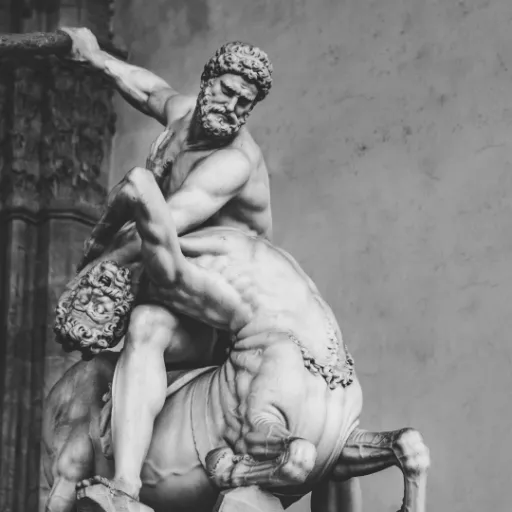
“But whether small or great, and no matter what stage or grade of life, the call rings up the curtain, always, on a mystery of transfiguration – a rite, or moment, of spiritual passage, which, when complete, amounts to a dying and a birth. The familiar life horizon has been outgrown; the old concepts, ideals, and emotional patterns no longer fit; the time for the passing of a threshold is at hand.”
– Joseph Campbell

What It Means to Be a Hero
There are moments when life calls upon you to embark on a journey – a series of events that, when undertaken, shape your constitution. The process typically produces someone stronger – someone more capable – than the individual who started. The benefits are immense. The transformation is profound.
Yet most calls remain unanswered.
Odds are, you’ve been called, but you’ve resisted. You told yourself later. Tomorrow. Now’s not the right time.
Life implored you to grow, but you refused.
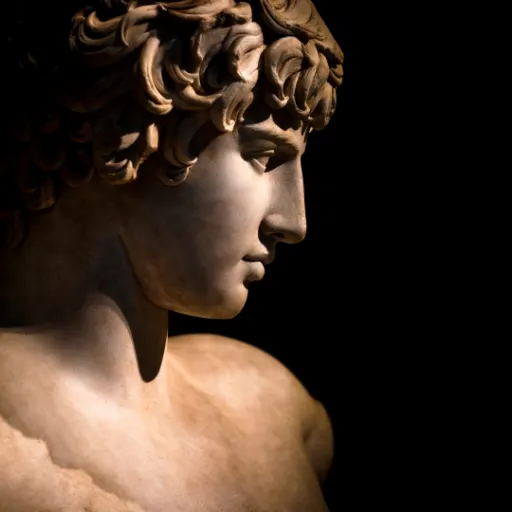
Understand this is not an indictment. Quite the contrary, it is to be expected. It is human nature to reject the call.
And yet deep down, whether you realize it or not, one of the things you want most is to embark on the journey you’ve resisted. How can that be?
In this two-part series, we aim to answer four questions:
We explore the answers to these questions below.
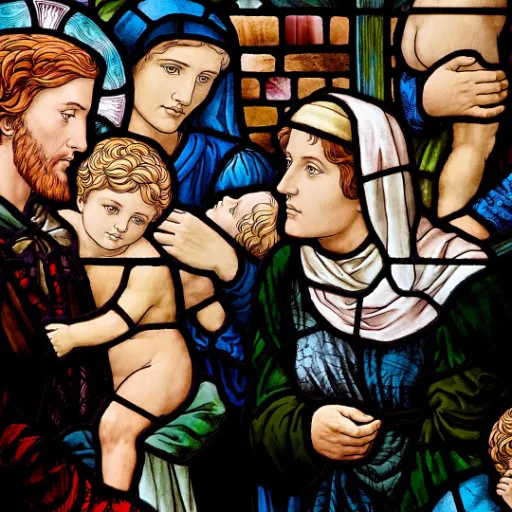
What is the Hero’s Journey?
The Hero’s Journey is a narrative template outlining the stages a hero passes through as they embark on their quest. Popularized by the late Joseph Campbell,* each step of the Hero’s Journey has been observed in various myths and tales from across the globe.
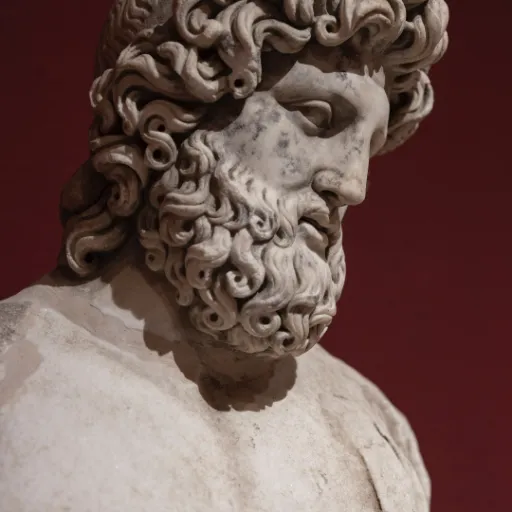
One of Campbell’s central claims is that the ubiquity of these narrative elements speaks to something deep and innate about the human condition – namely, that human beings have an inherent desire to embark on journeys of their own.¹ Our drive to experience the Hero’s Journey is rooted in what Abraham Maslow referred to as self-actualization – our need for personal growth and expansion. It is the process of navigating the journey which makes us stronger, more capable, and wiser, thereby satisfying these higher-level needs.
“For symbols of mythology are not manufactured; they cannot be ordered, invented, or permanently suppressed. They are spontaneous productions of the psyche, and each bears within it, undamaged, the germ power of its source.” – Joseph Campbell

The Hero’s Journey as a Metaphor for Growth
The hero’s journey is a metaphor for growth. We can illustrate this with an example.
Let’s imagine there’s a man (we’ll call him Steve) who wants to get his love life in order. When Steve interacts with women, he is shy and insecure. He recognizes the problem and decides he wants to do something about it.
One day, Steve sits down at his computer and enters the following search query into Google:
How do I get a girlfriend?

From this query, Steve stumbles upon the pickup community (for those unfamiliar with pickup, it is a community of men who want to improve their love life and get better at interacting with women). Steve observes that some local community members have planned a night out to practice approaching women. The invitation is open to all members on the forum. This invitation represents Steve’s call to adventure.
But alas, Steve decides not to go. He rejects the call.

The refusal of the call is crucial to unpack because this directly applies to your life. How many times have you had the opportunity to do something you knew would be good for you but didn’t? Logic dictates that when such opportunities arise, we should seize them. Yet this is seldom what people do. Here’s why:
The oldest, most primitive structures in your brain – commonly referred to as the reptilian brain – are hardwired to maintain homeostasis.²
Note: Homeostasis means the status quo, or what currently is.
Furthermore, the reptilian brain will maintain homeostasis even if the status quo isn’t providing what you desire. In fact, it will preserve homeostasis even if your current state produces ongoing suffering!
The critical insight to grasp is that so long as your current conditions do not threaten your physical survival, the reptilian brain will resist any change, regardless of whether that change is positive or negative.
Consequently, the mind will employ a variety of psychological mechanisms to maintain homeostasis. Typically, the first line of defense is resistance. Resistance is the psychological pull to refrain from engaging in an activity. Common examples include:
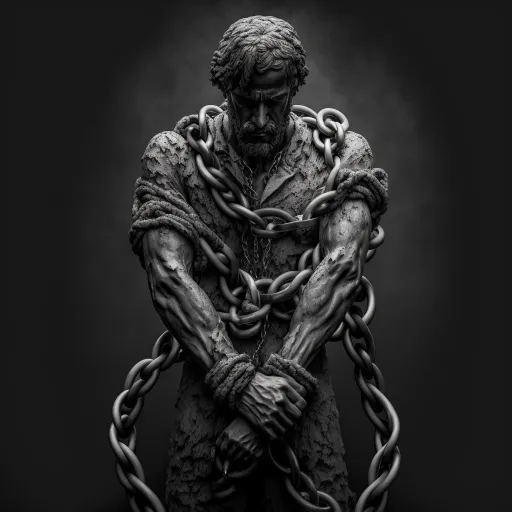
Think back to a time when you refused the call. This was resistance at play. This was your mind preserving homeostasis. This is why the hero initially refuses the call to adventure.
Let’s return to our example. One of the community members notices that Steve didn’t show up for the night out (let’s pretend there was a registration form that Steve signed, but then didn’t show). The following day, the person who organized the event (let’s call him Bob) reaches out to Steve on the forum and asks why he didn’t come. After some back and forth, Steve reveals that he was too nervous to attend. Bob invites Steve for coffee to persuade him to start going out. Steve has now met his mentor.
Note: mentors are not always physical people. Mentors may be authors, online teachers, etc.

The two men meet for coffee. After some convincing, Steve agrees to go out with Bob and his friends the following Friday. In doing so, Steve has accepted the call to adventure.
Next Friday rolls around. Steve meets Bob and his friends at a nightclub. Steve has never been to a club before. He has departed from the ordinary world, crossed the first threshold, and entered the world of adventure – often referred to as the world of the unknown.

The World of Adventure as a Metaphor for the Unconscious
As the hero departs the ordinary world, they set foot into the world of adventure. Within this new and peculiar landscape resides the unknown, the danger, the monsters, the demons, and the dragons. These are the entities the hero must conquer to move forward and expand.
The world of adventure represents your subconscious – a metaphor for the inner workings of your mind. Within your subconscious resides limiting beliefs, repressed traumas, insecurities, fears, and dormant capacities. These are the demons you will confront on your journey. Facing and overcoming these demons enables you – the hero – to grow and transform.
“The passage of the mythological hero… is inward – into depths where obscure resistances are overcome, and long lost, forgotten powers are revivified, to be made available for the transfiguration of the world.” – Joseph Campbell

To make sense of this, it is important to briefly touch on something called shadow work.*
In psychology, your shadow represents all the facets of your being that you have denied, ignored, repressed, or are unaware of.³ Some elements of the shadow include:
Shadow work entails bringing these elements out of the unconscious and into the conscious mind. We then integrate these elements to become more psychologically whole. To be more psychologically whole is to possess a deeper and broader understanding of who we are and what we are capable of, and to accept the facets of our being that we once repressed.
Note: Psychological wholeness involves integrating the “good” aspects of our being as well as the dark ones. In other words, both “positive” and “negative” elements of the self reside in the shadow.

The world of adventure, therefore, may be construed as a metaphor for the shadow, and the hero’s journey as a metaphor for shadow work. We can illustrate this by picking up where we left off with Steve.
“Mythology… is psychology misread as biography, history, and cosmology.” – Joseph Campbell
Steve and his new friends enter the nightclub. The music plays loud over the speakers. Hundreds of people crowd the dance floor. Strobe lights flicker, illuminating the sea of dancing bodies in a dizzying display.
For a man like Steve – someone introverted by nature – this represents a highly stressful environment. Steve knows he doesn’t do well in crowds. He’s more of a one-on-one guy; he is much better at listening than speaking.
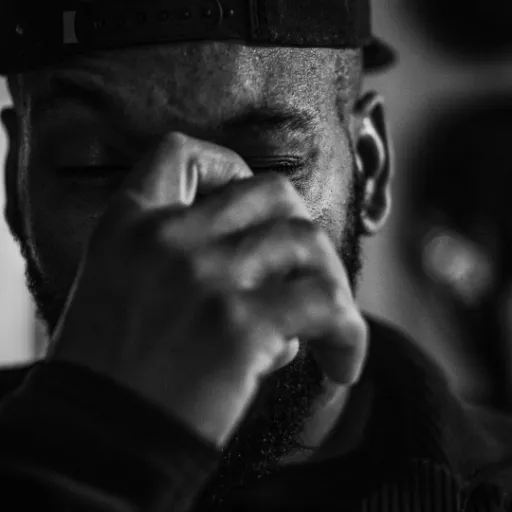
Steve begins to feel very uncomfortable. He knows he needs to develop his capacity to socialize in loud, noisy environments. He is, in essence, the proverbial fish out of water.
Furthermore, there are attractive women everywhere. Steve immediately feels intimidated. His insecurities begin bubbling to the surface. Thoughts race through his mind:
You could never have any of these girls.
You don’t belong here.
You can’t do this.
You aren’t attractive enough.
You aren’t charming enough.
Girls only go for the hot guys.
You should leave.
In this scenario, notice all the different elements of the hero’s journey:

Bob taps Steve on the shoulder. He points to an attractive woman standing at the bar.
“Go talk to her.”
Steve’s heart begins racing.
“I can’t,” he says.
“Yes, you can. That’s why you’re here. Go talk to her. Even if you bomb, you’ll still feel good about yourself. Trust me.”
Steve looks at Bob, then at the girl at the bar. His heart is beating out of his chest. He feels lightheaded. At any moment, he could pass out.
And yet, despite the fear, Steve begins to approach her. With each step, his fear grows; every fibre of his being compels him not to do it, yet he continues moving forward.
Finally, he reaches her.
“Hi,” he says.
She looks at him wearily.
“Hi,” she replies.
“I was with my friends and saw you at the bar. I thought you were pretty and I wanted to talk to you.”
“Oh, thanks,” she says, disinterested.
Before Steve can say anything else, she turns and leaves.

Steve stood there. He just experienced his first rejection – something that terrified him. Steve knew the interaction wasn’t a “success,” yet he couldn’t help but feel a wave of elation. Steve just did something he was convinced he couldn’t do. Despite his fear, he approached, thereby demonstrating a depth of courage he did not know he possessed. This realization struck him in a flash and, with it, a newfound sense of confidence and self-respect. Steve had conquered his first demon in the world of adventure and, in doing so, experienced profound and immediate growth.
For the next six months, Steve continued to go out with his new friends three nights a week. With every outing, his comfort in large crowds and loud environments grew. With each approach, his confidence around women increased. Steve started having fun. He began to take women home. His experiences were helping him shed limiting beliefs, develop his confidence, and fundamentally restructure the makeup of his psyche. Steve was a hero slaying his demons, overcoming his fears, and navigating trials and challenges.
As a result, Steve began to transform.

Transformation as Preparation for The Ordeal
The journey’s trials are the mechanism by which we grow and change. This transformation ultimately enables us to acquire the ultimate boon – the reward we initially sought when embarking on the journey. For Steve, the boon was attracting a girlfriend.
But before the hero can acquire their reward, they must descend to the innermost cave and overcome the ordeal. The descent is the part of the journey where the hero faces their greatest challenge. In overcoming this challenge, the hero is granted access to their reward.
Let’s examine how this applies to Steve.

After six months of going out, Steve has reached a level of development where he feels ready to enter the dating scene. For Steve, dating represents the innermost cave.
Steve creates a dating profile and begins to date. The issue, though, is that he can never seem to make it past the first or second date. The women he goes out with either end up ghosting him or offering an excuse about why they can’t get together again. This goes on for months.
With every rejection, Steve becomes increasingly despondent. Had all of this been for nothing?
Self-doubt begins to creep in. All the confidence he built begins to erode. He starts feeling hopeless.
Steve now faces the ordeal – a significant challenge or crisis standing between the hero and the treasure they seek.

In need of guidance, Steve reaches out to Bob. They meet for coffee, and Steve explains the situation. Bob listens intently and then says,
“It’s a different stage.”
Steve looks at him, brow furrowed.
“What do you mean?”
“It’s a different stage,” says Bob. “At nightclubs, you were always in the attraction phase, and then you’d take her home. It’s different in the dating scene. The attraction phase is only the first of three stages, and it’s also the shortest. After the attraction phase comes the dating phase, and after that, the relationship phase. Each stage has its own set of skills and principles that need to be mastered to produce success. Your dates aren’t going anywhere because you haven’t developed your dating skills.”

It was as if a lightbulb had gone off in Steve’s mind. Of course dating is different from attracting women in a nightclub. Why hadn’t he seen that?
With this new insight, Steve begins reading as much as possible about dating and relationships. He takes the principles he learns from his research and puts them into practice. As Steve persists, he becomes capable of creating, sustaining, and growing attraction over time. By cultivating these capacities, Steve eventually attracts a girlfriend.
In overcoming the ordeal, Steve underwent a metamorphosis that would ultimately enable him to acquire his holy grail – a loving relationship.

The Road Back, Resurrection, and Return with the Elixir.
You may have noticed the penultimate phase of the hero’s journey is titled Resurrection. What does this mean?
Resurrection entails death and rebirth – the central theme of any hero’s journey.
In personal development, death and rebirth aren’t physical. Instead, they’re psychological. By undergoing the trials, the hero becomes a different person – someone more robust, capable, and conscious.*
By embarking on the journey, your old self will die. A new self will take its place. And in the end, you will realize that the holy grail was never about money, an amazing partner, or having a perfect body.
The true grail is inner transformation – this is the mark of a hero.
“Every failure to cope with a life situation must be laid, in the end, to a restriction of consciousness. Wars and temper tantrums are the makeshifts of ignorance; regrets are illuminations come too late. The whole sense of the ubiquitous myth of the hero’s passage is that it shall serve as a general pattern for men and women, wherever they may stand along the scale. The individual has only to discover his own position with reference to this general human formula, and let it then assist him past his restricting walls.” – Joseph Campbell

In the final stage of the journey, the hero returns to the ordinary world with the elixir. It is now incumbent upon the hero to share this elixir with the world. But how can the hero hope to do this? The elixir can only be enjoyed by those who undergo the transformative process of the hero’s journey.
Sharing the elixir – communicating wisdom, growth, and awareness to the uninitiated masses – is a great struggle for any hero. But not all is lost, for others are ready to accept the call. For those individuals, heroes adopt the role of mentor and teacher, using their experience to guide others towards Truth, growth, and the expansion of their being. It is this heroic cycle which facilitates humanity’s continual development. To be a part of this cycle is to be part of something magnificently deep and profound. By accepting the call, we each become part of that process and, in doing so, contribute to humanity’s collective expansion.

For now, I leave you with a quote:
“We have not even to risk the adventure alone; for the heroes of all time have gone before us; the labyrinth is thoroughly known; we have only to follow the thread of the hero path. And where we had thought to find an abomination, we shall find a god; where we had thought to slay another, we shall slay ourselves; where we had thought to travel outward, we shall come to the center of our own existence; where we had thought to be alone, we shall be with all the world.” – Joseph Campbell
March 1st, 2023
Ben Olson
“But whether small or great, and no matter what stage or grade of life, the call rings up the curtain, always, on a mystery of transfiguration – a rite, or moment, of spiritual passage, which, when complete, amounts to a dying and a birth. The familiar life horizon has been outgrown; the old concepts, ideals, and emotional patterns no longer fit; the time for the passing of a threshold is at hand.”
– Joseph Campbell
What It Means to Be a Hero
There are moments when life calls upon you to embark on a journey – a series of events that, when undertaken, shape your constitution. The process typically produces someone stronger – someone more capable – than the individual who started. The benefits are immense. The transformation is profound.
Yet most calls remain unanswered.
Odds are, you’ve been called, but you’ve resisted. You told yourself later. Tomorrow. Now’s not the right time.
Life implored you to grow, but you refused.
Understand this is not an indictment. Quite the contrary, it is to be expected. It is human nature to reject the call.
And yet deep down, whether you realize it or not, one of the things you want most is to embark on the journey you’ve resisted. How can that be?
In this two-part series, we aim to answer four questions:
We explore the answers to these questions below.



What is the Hero’s Journey?
The Hero’s Journey is a narrative template outlining the stages a hero passes through as they embark on their quest. Popularized by the late Joseph Campbell,* each step of the Hero’s Journey has been observed in various myths and tales from across the globe.
One of Campbell’s central claims is that the ubiquity of these narrative elements speaks to something deep and innate about the human condition – namely, that human beings have an inherent desire to embark on journeys of their own.¹ Our drive to experience the Hero’s Journey is rooted in what Abraham Maslow referred to as self-actualization – our need for personal growth and expansion. It is the process of navigating the journey which makes us stronger, more capable, and wiser, thereby satisfying these higher-level needs.
“For symbols of mythology are not manufactured; they cannot be ordered, invented, or permanently suppressed. They are spontaneous productions of the psyche, and each bears within it, undamaged, the germ power of its source.” – Joseph Campbell


The Hero’s Journey as a Metaphor for Growth
The hero’s journey is a metaphor for growth. We can illustrate this with an example.
Let’s imagine there’s a man (we’ll call him Steve) who wants to get his love life in order. When Steve interacts with women, he is shy and insecure. He recognizes the problem and decides he wants to do something about it.
One day, Steve sits down at his computer and enters the following search query into Google:
How do I get a girlfriend?
From this query, Steve stumbles upon the pickup community (for those unfamiliar with pickup, it is a community of men who want to improve their love life and get better at interacting with women). Steve observes that some local community members have planned a night out to practice approaching women. The invitation is open to all members on the forum. This invitation represents Steve’s call to adventure.
But alas, Steve decides not to go. He rejects the call.
The refusal of the call is crucial to unpack because this directly applies to your life. How many times have you had the opportunity to do something you knew would be good for you but didn’t? Logic dictates that when such opportunities arise, we should seize them. Yet this is seldom what people do. Here’s why:
The oldest, most primitive structures in your brain – commonly referred to as the reptilian brain – are hardwired to maintain homeostasis.²
Note: Homeostasis means the status quo, or what currently is.
Furthermore, the reptilian brain will maintain homeostasis even if the status quo isn’t providing what you desire. In fact, it will preserve homeostasis even if your current state produces ongoing suffering!
The critical insight to grasp is that so long as your current conditions do not threaten your physical survival, the reptilian brain will resist any change, regardless of whether that change is positive or negative.
Consequently, the mind will employ a variety of psychological mechanisms to maintain homeostasis. Typically, the first line of defense is resistance. Resistance is the psychological pull to refrain from engaging in an activity. Common examples include:
Think back to a time when you refused the call. This was resistance at play. This was your mind preserving homeostasis. This is why the hero initially refuses the call to adventure.
Let’s return to our example. One of the community members notices that Steve didn’t show up for the night out (let’s pretend there was a registration form that Steve signed, but then didn’t show). The following day, the person who organized the event (let’s call him Bob) reaches out to Steve on the forum and asks why he didn’t come. After some back and forth, Steve reveals that he was too nervous to attend. Bob invites Steve for coffee to persuade him to start going out. Steve has now met his mentor.
Note: mentors are not always physical people. Mentors may be authors, online teachers, etc.
The two men meet for coffee. After some convincing, Steve agrees to go out with Bob and his friends the following Friday. In doing so, Steve has accepted the call to adventure.
Next Friday rolls around. Steve meets Bob and his friends at a nightclub. Steve has never been to a club before. He has departed from the ordinary world, crossed the first threshold, and entered the world of adventure – often referred to as the world of the unknown.





The World of Adventure as a Metaphor for the Unconscious
As the hero departs the ordinary world, they set foot into the world of adventure. Within this new and peculiar landscape resides the unknown, the danger, the monsters, the demons, and the dragons. These are the entities the hero must conquer to move forward and expand.
The world of adventure represents your subconscious – a metaphor for the inner workings of your mind. Within your subconscious resides limiting beliefs, repressed traumas, insecurities, fears, and dormant capacities. These are the demons you will confront on your journey. Facing and overcoming these demons enables you – the hero – to grow and transform.
“The passage of the mythological hero… is inward – into depths where obscure resistances are overcome, and long lost, forgotten powers are revivified, to be made available for the transfiguration of the world.” – Joseph Campbell
To make sense of this, it is important to briefly touch on something called shadow work.*
In psychology, your shadow represents all the facets of your being that you have denied, ignored, repressed, or are unaware of.³ Some elements of the shadow include:
Shadow work entails bringing these elements out of the unconscious and into the conscious mind. We then integrate these elements to become more psychologically whole. To be more psychologically whole is to possess a deeper and broader understanding of who we are and what we are capable of, and to accept the facets of our being that we once repressed.
Note: Psychological wholeness involves integrating the “good” aspects of our being as well as the dark ones. In other words, both “positive” and “negative” elements of the self reside in the shadow.
The world of adventure, therefore, may be construed as a metaphor for the shadow, and the hero’s journey as a metaphor for shadow work. We can illustrate this by picking up where we left off with Steve.
“Mythology… is psychology misread as biography, history, and cosmology.” – Joseph Campbell
Steve and his new friends enter the nightclub. The music plays loud over the speakers. Hundreds of people crowd the dance floor. Strobe lights flicker, illuminating the sea of dancing bodies in a dizzying display.
For a man like Steve – someone introverted by nature – this represents a highly stressful environment. Steve knows he doesn’t do well in crowds. He’s more of a one-on-one guy; he is much better at listening than speaking.
Steve begins to feel very uncomfortable. He knows he needs to develop his capacity to socialize in loud, noisy environments. He is, in essence, the proverbial fish out of water.
Furthermore, there are attractive women everywhere. Steve immediately feels intimidated. His insecurities begin bubbling to the surface. Thoughts race through his mind:
You could never have any of these girls.
You don’t belong here.
You can’t do this.
You aren’t attractive enough.
You aren’t charming enough.
Girls only go for the hot guys.
You should leave.
In this scenario, notice all the different elements of the hero’s journey:
Bob taps Steve on the shoulder. He points to an attractive woman standing at the bar.
“Go talk to her.”
Steve’s heart begins racing.
“I can’t,” he says.
“Yes, you can. That’s why you’re here. Go talk to her. Even if you bomb, you’ll still feel good about yourself. Trust me.”
Steve looks at Bob, then at the girl at the bar. His heart is beating out of his chest. He feels lightheaded. At any moment, he could pass out.
And yet, despite the fear, Steve begins to approach her. With each step, his fear grows; every fibre of his being compels him not to do it, yet he continues moving forward.
Finally, he reaches her.
“Hi,” he says.
She looks at him wearily.
“Hi,” she replies.
“I was with my friends and saw you at the bar. I thought you were pretty and I wanted to talk to you.”
“Oh, thanks,” she says, disinterested.
Before Steve can say anything else, she turns and leaves.
Steve stood there. He just experienced his first rejection – something that terrified him. Steve knew the interaction wasn’t a “success,” yet he couldn’t help but feel a wave of elation. Steve just did something he was convinced he couldn’t do. Despite his fear, he approached, thereby demonstrating a depth of courage he did not know he possessed. This realization struck him in a flash and, with it, a newfound sense of confidence and self-respect. Steve had conquered his first demon in the world of adventure and, in doing so, experienced profound and immediate growth.
For the next six months, Steve continued to go out with his new friends three nights a week. With every outing, his comfort in large crowds and loud environments grew. With each approach, his confidence around women increased. Steve started having fun. He began to take women home. His experiences were helping him shed limiting beliefs, develop his confidence, and fundamentally restructure the makeup of his psyche. Steve was a hero slaying his demons, overcoming his fears, and navigating trials and challenges.
As a result, Steve began to transform.







Transformation as Preparation for The Ordeal
The journey’s trials are the mechanism by which we grow and change. This transformation ultimately enables us to acquire the ultimate boon – the reward we initially sought when embarking on the journey. For Steve, the boon was attracting a girlfriend.
But before the hero can acquire their reward, they must descend to the innermost cave and overcome the ordeal. The descent is the part of the journey where the hero faces their greatest challenge. In overcoming this challenge, the hero is granted access to their reward.
Let’s examine how this applies to Steve.
After six months of going out, Steve has reached a level of development where he feels ready to enter the dating scene. For Steve, dating represents the innermost cave.
Steve creates a dating profile and begins to date. The issue, though, is that he can never seem to make it past the first or second date. The women he goes out with either end up ghosting him or offering an excuse about why they can’t get together again. This goes on for months.
With every rejection, Steve becomes increasingly despondent. Had all of this been for nothing?
Self-doubt begins to creep in. All the confidence he built begins to erode. He starts feeling hopeless.
Steve now faces the ordeal – a significant challenge or crisis standing between the hero and the treasure they seek.
In need of guidance, Steve reaches out to Bob. They meet for coffee, and Steve explains the situation. Bob listens intently and then says,
“It’s a different stage.”
Steve looks at him, brow furrowed.
“What do you mean?”
“It’s a different stage,” says Bob. “At nightclubs, you were always in the attraction phase, and then you’d take her home. It’s different in the dating scene. The attraction phase is only the first of three stages, and it’s also the shortest. After the attraction phase comes the dating phase, and after that, the relationship phase. Each stage has its own set of skills and principles that need to be mastered to produce success. Your dates aren’t going anywhere because you haven’t developed your dating skills.”
It was as if a lightbulb had gone off in Steve’s mind. Of course dating is different from attracting women in a nightclub. Why hadn’t he seen that?
With this new insight, Steve begins reading as much as possible about dating and relationships. He takes the principles he learns from his research and puts them into practice. As Steve persists, he becomes capable of creating, sustaining, and growing attraction over time. By cultivating these capacities, Steve eventually attracts a girlfriend.
In overcoming the ordeal, Steve underwent a metamorphosis that would ultimately enable him to acquire his holy grail – a loving relationship.




The Road Back, Resurrection, and Return with the Elixir.
You may have noticed the penultimate phase of the hero’s journey is titled Resurrection. What does this mean?
Resurrection entails death and rebirth – the central theme of any hero’s journey.
In personal development, death and rebirth aren’t physical. Instead, they’re psychological. By undergoing the trials, the hero becomes a different person – someone more robust, capable, and conscious.*
By embarking on the journey, your old self will die. A new self will take its place. And in the end, you will realize that the holy grail was never about money, an amazing partner, or having a perfect body.
The true grail is inner transformation – this is the mark of a hero.
“Every failure to cope with a life situation must be laid, in the end, to a restriction of consciousness. Wars and temper tantrums are the makeshifts of ignorance; regrets are illuminations come too late. The whole sense of the ubiquitous myth of the hero’s passage is that it shall serve as a general pattern for men and women, wherever they may stand along the scale. The individual has only to discover his own position with reference to this general human formula, and let it then assist him past his restricting walls.” – Joseph Campbell
In the final stage of the journey, the hero returns to the ordinary world with the elixir. It is now incumbent upon the hero to share this elixir with the world. But how can the hero hope to do this? The elixir can only be enjoyed by those who undergo the transformative process of the hero’s journey.
Sharing the elixir – communicating wisdom, growth, and awareness to the uninitiated masses – is a great struggle for any hero. But not all is lost, for others are ready to accept the call. For those individuals, heroes adopt the role of mentor and teacher, using their experience to guide others towards Truth, growth, and the expansion of their being. It is this heroic cycle which facilitates humanity’s continual development. To be a part of this cycle is to be part of something magnificently deep and profound. By accepting the call, we each become part of that process and, in doing so, contribute to humanity’s collective expansion.
For now, I leave you with a quote:
“We have not even to risk the adventure alone; for the heroes of all time have gone before us; the labyrinth is thoroughly known; we have only to follow the thread of the hero path. And where we had thought to find an abomination, we shall find a god; where we had thought to slay another, we shall slay ourselves; where we had thought to travel outward, we shall come to the center of our own existence; where we had thought to be alone, we shall be with all the world.” – Joseph Campbell




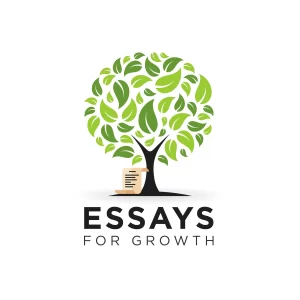
Hey, thanks for signing up!
An email should be landing in your inbox shortly. If you don’t see it, check your spam folder (and remember to add Essays for Growth to your trusted senders list).
When you receive the email, you will find your copy of the Deep Learning Method – the perfect companion piece for the essays on this site. I encourage you to employ what you learn from the method to get the most out of Essays for Growth.
If you have any questions, please feel free to reach out at info@essaysforgrowth.com
Regards,
Ben

Hey, thanks for signing up!
An email should be landing in your inbox shortly. If you don’t see it, check your spam folder (and remember to add Essays for Growth to your trusted senders list).
When you receive the email, you will find your copy of the Deep Learning Method – the perfect companion piece for the essays on this site. I encourage you to employ what you learn from the method to get the most out of Essays for Growth.
If you have any questions, please feel free to reach out at info@essaysforgrowth.com
Regards,
Ben
1 thought on “The Hero’s Journey Part 1”
Good job